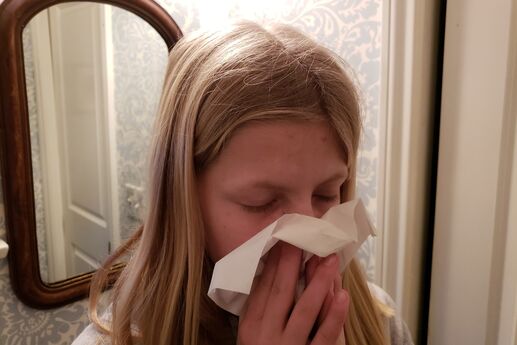8 Ways to Soothe a Sick Child
No mom wants her child to feel miserable -- and the common cold can really wipe a kid out! Fortunately, combining a few simple moves with time-tested remedies can help ease your little one’s symptoms. So the next time she starts coughing and sneezing, try these savvy tricks to soothe your sick kid in no time.
1. Push an ice pop. “This frozen treat can help soothe a sore throat, plus provide extra fluid to prevent dehydration,” says Dr. Susan Besser, a family physician in Memphis, Tenn., and a mother of six. Giving your child plenty of liquids will also help thin out mucus, making it easier to cough it up.
2. Choose the right remedy. An over-the-counter medication is one of the best ways to relieve cough and cold; just make sure to check the label for age restrictions. A multi-symptom drug is useful in many cases, but don’t assume that it’s a one-size-fits-all treatment. “If your child isn’t experiencing each of the ailments listed on the box, you’re giving her unnecessary meds,” says Besser. “That may cause uncomfortable side effects, like insomnia or nausea.” She advises matching up your child’s specific symptoms with the medicine you give her.
3. Use an extra pillow. “Elevating a child’s head will keep those nasal secretions flowing forward and out of the nose,” says Dr. Peter I. Liber, a pediatrician in Wheaton, Ill., and a father of four. That can prevent postnasal drip from turning into a cough -- and help her sleep more soundly.
4. Have a cooldown. While waiting for that acetaminophen or ibuprofen to kick in, a cold washcloth or icy drink can provide relief for a feverish child. Skip the cool bath, though: Liber explains that may raise his core temperature -- and actually worsen fever.
5. Soothe with steam. “Adding moisture to the air can help loosen up congestion,” says Besser. Keep a vaporizer or humidifier in your child’s room, and remember to change the water daily to prevent bacteria growth. Or run a hot shower and let her sit in the fogged-up bathroom for up to 15 minutes.
6. Teach good hankie habits. “Clamping your nose with a tissue and blowing forcefully can lead to nosebleeds or even a ruptured eardrum,” cautions Besser. Instruct your child to clear her nose gently. While you’re at it, remind her to toss the tissue in the trash afterwards and wash her hands to avoid spreading germs.
7. Calm with creams. Turns out those mentholated topical ointments and creams your own mom gave you really do work. According to a recent study, sick kids whose parents applied a vapor rub to their chest 30 minutes before bedtime slept better, breathed easier and coughed less throughout the night than those who didn’t. Just make sure to follow the directions on the package, and avoid using in and around the nose.
8. Protect his nose. You can’t always help whether your little guy uses a tissue or his sleeve to wipe his nose. “But you can keep his nostrils from getting red,” says Liber. He suggests applying a thin layer of petroleum jelly beneath his nose and on the outside of his nostrils to keep the skin from becoming chapped.





